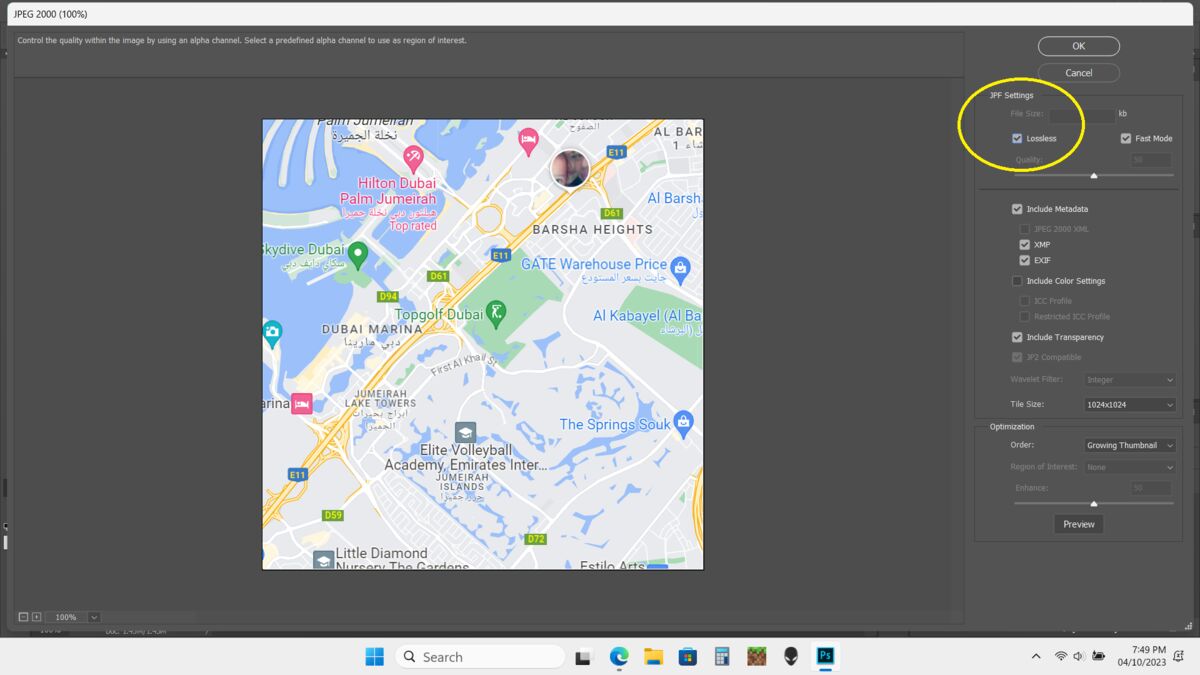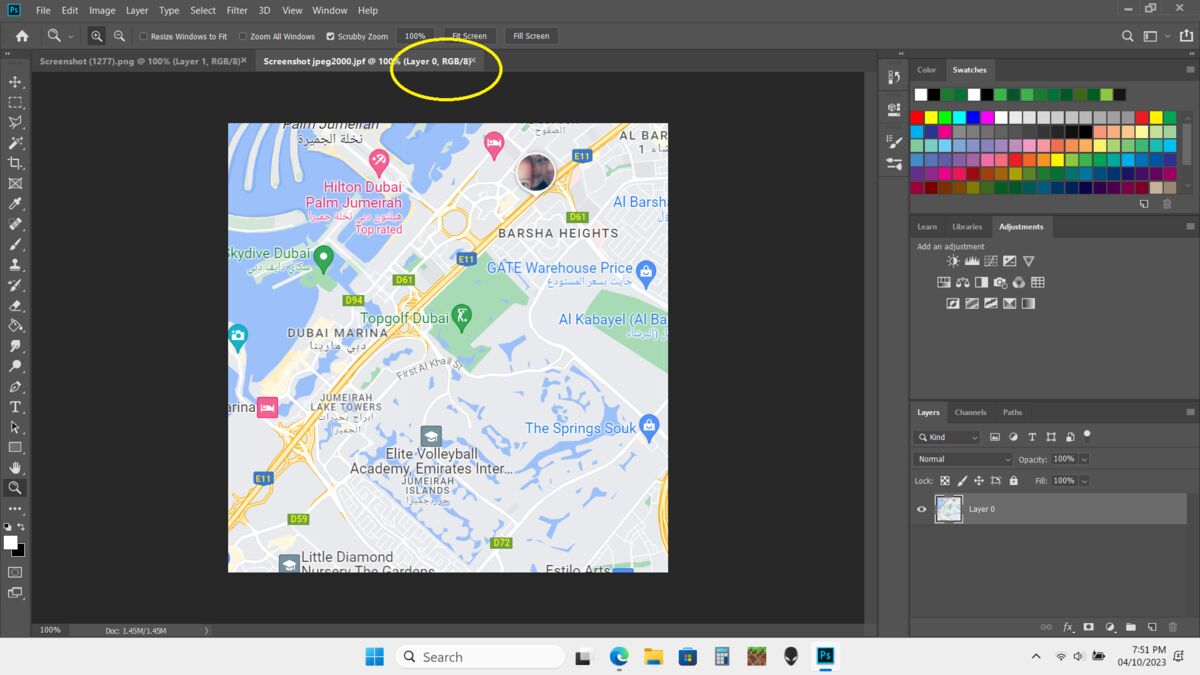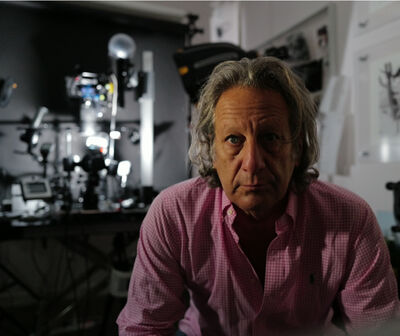JPG vs. RAW
Oct 4, 2023 01:46:02 #
Oct 4, 2023 08:39:55 #
Depends on your ability to capture a properly exposed image 100% of the time. If you can do that, you should be ok. If not, the one image that you need to correct, may not be save-able.
Let me explain.
Shooting RAW provides 4,096 tonal values per channel vs JPEG which provides a mere 256 tonal values per channel. Personally, I prefer having all of the additional information than giving it up. I do work on all of my images that I take, it’s very rare that I use an image unedited. My images are typically properly exposed without blown highlights.
Shooting RAW also provides the ability to adjust certain parameters that are not imbedded into the JPEG file.
But to go back to your specific question, if you expose properly, your images should ok. Use your histogram and flashing highlights to make sure you are exposing correctly.
Let me explain.
Shooting RAW provides 4,096 tonal values per channel vs JPEG which provides a mere 256 tonal values per channel. Personally, I prefer having all of the additional information than giving it up. I do work on all of my images that I take, it’s very rare that I use an image unedited. My images are typically properly exposed without blown highlights.
Shooting RAW also provides the ability to adjust certain parameters that are not imbedded into the JPEG file.
But to go back to your specific question, if you expose properly, your images should ok. Use your histogram and flashing highlights to make sure you are exposing correctly.
Oct 4, 2023 09:40:29 #
Ysarex
Loc: St. Louis
Robertl594 wrote:
Depends on your ability to capture a properly exposed image 100% of the time. If you can do that, you should be ok. If not, the one image that you need to correct, may not be save-able.
Let me explain.
Shooting RAW provides 4,096 tonal values per channel vs JPEG which provides a mere 256 tonal values per channel.
Let me explain.
Shooting RAW provides 4,096 tonal values per channel vs JPEG which provides a mere 256 tonal values per channel.
Those figures are incorrect and it's a very misleading comparison. The tonal data stored in a raw files is linear while the tonal data stored in a JPEG is non-linear. You can't do a side-by-side comparison if you don't have like-units of measure -- and you don't.
It is fair to say that raw files record more information but it's not appropriate to throw out those bit depth numbers as if they're comparable. The 4096 figure would be a camera with a 12 bit ADC. The last camera I had that didn't have a 14 bit ADC dated from 2012, more than a decade ago.
Robertl594 wrote:
Personally, I prefer having all of the additional ... (show quote)
Oct 4, 2023 10:10:23 #
Please correct me. Have I been under a misconception? 8 bit is 256 and 12 bit is 4,096 and at 14 bit, it would be 16,384. At least according to my math. I am happy to be corrected. I hate to provide mis information. Bottom line, is that the difference in the amount of information is significant.
Thank you
RL
Thank you
RL
Oct 4, 2023 10:48:05 #
Ysarex
Loc: St. Louis
Robertl594 wrote:
Please correct me. Have I been under a misconception? 8 bit is 256 and 12 bit is 4,096 and at 14 bit, it would be 16,384. At least according to my math. I am happy to be corrected. I hate to provide mis information. Bottom line, is that the difference in the amount of information is significant.
Thank you
RL
Thank you
RL
Yes, the bottom line is fine -- there's a difference in the amount of information and it's significant. The problem is with the comparison using the bit depth figures. You don't have a standard unit of measure applicable to allow for a comparison and so it's misleading to suggest a comparison using those values.
The best analogy I can think of is a 1 foot ruler and a yardstick. Both share the same unit of measure and so I can compare them directly and say that the yardstick is 200% longer than the ruler. We can't do the same when comparing 12 or 14 bit raw files and 8 bit JPEGs. They don't share a standard unit of measure. Even the 12 and 14 bit raw files do not share a standard unit of measure. With raw files the tonal steps (inches on the yardstick) are linear but with the 8 bit JPEG they are non-linear (imagine a ruler in which the markings are all spaced differently).
Consider the dynamic range of a scene -- recorded number of stops -- is what we're trying to measure. My little 1" sensor camera with a 14 bit ADC can record a usable 9 stops of DR. It's completely possible for me to process a JPEG from one of those raw files such that the JPEG likewise displays highlight/shadow detail over the same 9 stop range that was visible in the scene -- ruler is the same length as the yardstick!!? One stores linear data and the other stores non-linear data.
So back to your bottom line, yes we want to say that raw files store more information, but to list those bit depth values as a way to suggest the size of the difference is misleading.
Oct 4, 2023 11:22:45 #
Oct 4, 2023 11:28:06 #
Martys wrote:
Only your dog can see the difference.
My dog is not very smart...he uses a Canon in jpeg only.
Oct 4, 2023 11:57:05 #
Ysarex wrote:
Yes, the bottom line is fine -- there's a differen... (show quote)
Interesting. Thank you for taking the time to explain this is such detail.
Oct 4, 2023 12:12:34 #
Hip Coyote wrote:
My dog is not very smart...he uses a Canon in jpeg only. Just seeing if we can hit 20 pages.
To assure 20 pages, or to go for an impressive over run, it would help to know whether your dog uses a filter and a hood.
Oct 4, 2023 12:14:33 #
User ID wrote:
To assure 20 pages, or to go for an impressive over run, it would help to know whether your dog uses a filter and a hood.
You should use a filter if you shoot jpg.
If you shoot raw, you should use a hood.
\s
Oct 4, 2023 12:15:32 #
Robertl594 wrote:
Please correct me. Have I been under a misconception? 8 bit is 256 and 12 bit is 4,096 and at 14 bit, it would be 16,384. At least according to my math. I am happy to be corrected. I hate to provide mis information. Bottom line, is that the difference in the amount of information is significant.
Thank you
RL
Thank you
RL
It is actually more convoluted than just looking for a direct comparison between the 2 measurements.
A sensors pixel is counted individually and each of those pixel will recieve light to be converted and written in XX-bits. Say 14 bits which each pixel can register 16,000+ shades. That sounds cool and perfect until we take into consideration that the pixel is only showing one color. Yep, remember the bayer matrix?
On the other hand, the color we see being represented by a JPG file on screen may be construed as 8 bit or 256 shades, BUT, they are now sub pixels. The complete dot is composed of 3 pixels meaning each color is represented by 256X256X256 colors. That is more than a 16.6 million colors & shades. One should actually bother more with the monitor quality than the software.
Thus, 8 bit can make enought colors and shades*. The main problem is the JPEG's applied compression algorithm** and the resulting bandwith that comes with it, where we trade file size for embeded data. Another complication is the adjustments/settings where the software would prioritize certain bands of data. I.E. HDR, Curves, Levels & Contrast, which can widen or narrow the stops/dynamic range within the image, thus even with the bad compression, we may visually(cheat) equal the dynamic range of the saved RAW file.
One more thing is the available light, its amount, quality and the scene itself. These complication, depending on the circumstance may multiply or negate the bandwith & data advatage of the RAW file when compared to the JPG.
And then there is the sensor itself. They are not all equal and some may not be able to provide the dynamic range the ADR can achieve.
If my messed up explantion just made things worse, dont fret. Just do with what you are happy with.
Maybe just experiment with the unfamiliar from time to time and perhaps a shoe would fit, and then you got yourself another wardrobe to show for.
Below is the JPEG200 file/compression algorithm which can save lossless. As you can see, it is still 8bit. Sadly I know of no camera at the moment that can save directly to this file. I believe they are still using the older standards.
That aside, do not worry about the camera's computing power & speed. That is what the buffer is for, so it can run the same compression algorithm as would the most powerful PC. The only actual drawback of using JPEG in camera is that there are more leeway to fine tune the adjustments in a PC. On the same slide setting, its pretty much the same banana. You actually save slower with less images, and consume the buffer of the camera faster when shooting RAW.
.
* this is JPEG2000 saving lossless

** this is a JPEG2000 8bit RGB image

Oct 4, 2023 12:28:37 #
Oct 4, 2023 12:40:37 #
Ysarex wrote:
The 4096 figure would be a camera with a 12 bit ADC. The last camera I had that didn't have a 14 bit ADC dated from 2012, more than a decade ago.
The 4096 value is wrong because a 14-bit raw file can actually record 16384 values in each channel. The problem is that not all of those values are actually useful.
The linear progression of raw values starts with 8192 values in the brightest 1-stop zone - overkill that is seldom useful. The next darker zone has 4096 values, still too many. This is followed by 2048, 1024 and so forth. It continues like the frog jumping halfway to the fence with each hop. By the time we get close to the end the number of values in each darker zone become small enough to make it impossible to recover any meaningful shadow information.
That's the linear nature of the raw file values. It explains the need for ETTR and the Russian Roulette game that we insist on playing with the highlight limit.
We end up with the dynamic range of the best cameras showing up as maybe 14 or 11 stops of dynamic range depending on who is defining where the noise starts to ruin the image. We might get more with a 16-bit raw file and a very expensive camera that can justify it but most of us would not know what to do with it.
All of this gets converted during demosaicing into a logarithmic progression in which each zone contains more equal spacing. But it's not really equal since the zones in the middle actually end up with a bit more contrast than in the dark and bright zones.
The resulting image is not necessarily an 8-bit JPEG or TIFF. An editor on the computer can convert the raw values into a 16-bit raster image in the computer's memory that can then be modified until we are ready to export it to a file as a 16-bit TIFF or an 8-bit JPEG, TIFF or other format.
Oct 4, 2023 12:44:40 #
User ID wrote:
To assure 20 pages, or to go for an impressive over run, it would help to know whether your dog uses a filter and a hood.
What does the dog do when he has a GAS attack?
Oct 4, 2023 13:27:55 #
If you want to reply, then register here. Registration is free and your account is created instantly, so you can post right away.





